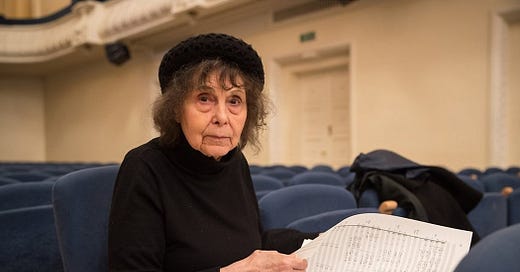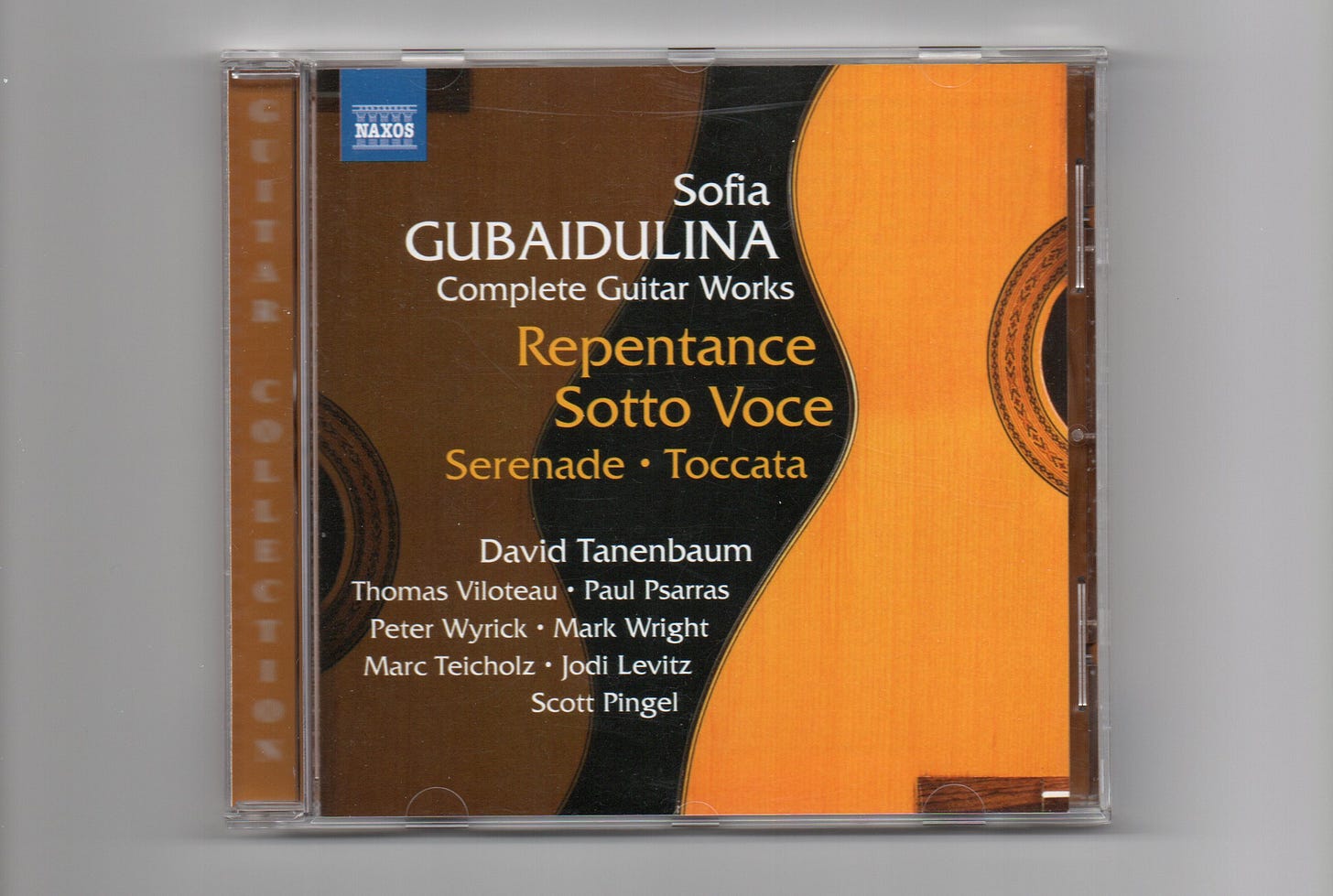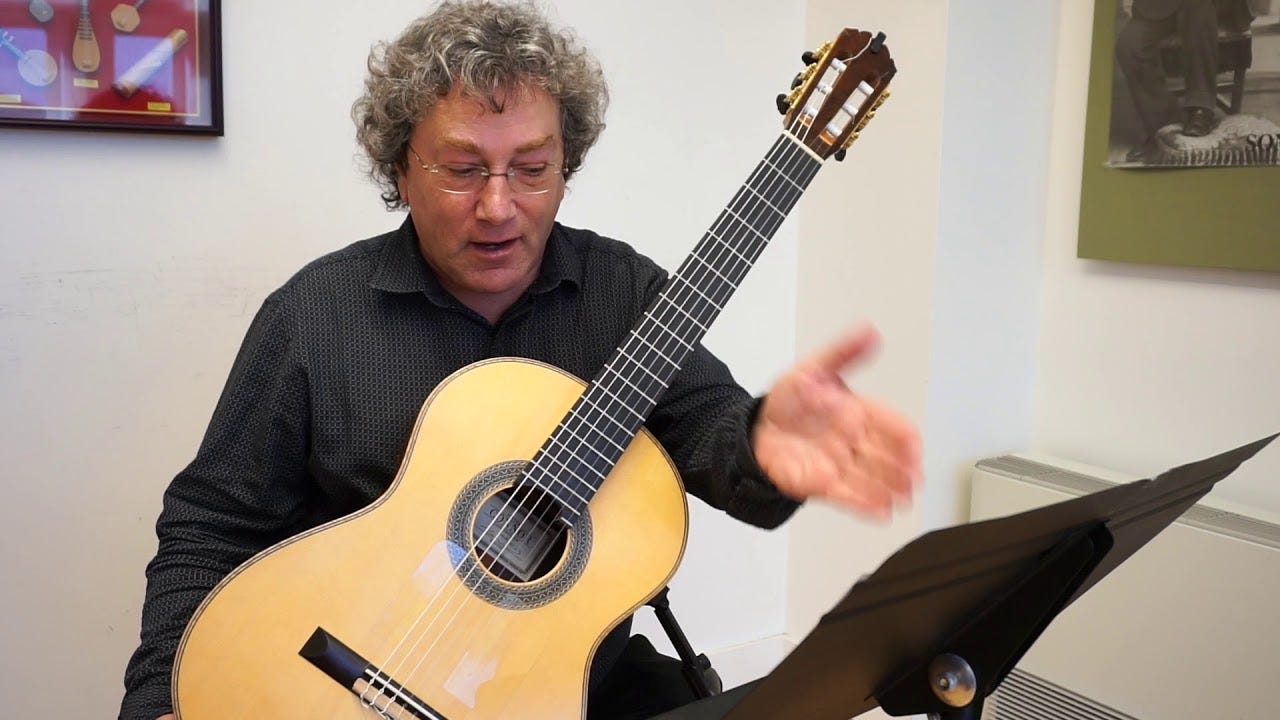Russian musician and composer Sofija Gubajdulina passed away on March 13, 2025, (Čistopol', October 24, 1931 – Appen, March 13, 2025).
Sofija Asgatovna Gubajdulina was one of the most influential contemporary composers, whose musical language managed to merge sonic experimentation, spirituality, and symbolism. Born on October 24, 1931, in Čistopol, in the Tatar Autonomous Soviet Socialist Republic, her career developed between the rigidity of the Soviet Union and international recognition in the Western world. Gubajdulina studied composition at the Kazan Conservatory and later refined her skills at the Moscow Conservatory under Nikolaj Pejko, a student of Dmitrij Šostakovič. From the very beginning of her career, she showed a strong inclination for experimentation and a musical language that transcended the boundaries of the Soviet classical tradition. This tendency brought her into conflict with Soviet cultural authorities, who considered her too avant-garde.
Gubajdulina's musical language is characterized by an innovative use of microtonality, the combination of Western and Eastern instruments, and strong numerical and religious symbolism. Her music drew from diverse musical traditions, from Gregorian chant to Tatar folk music, while also reflecting influences from composers such as Šostakovič, Webern, and Messiaen. Another of the most distinctive aspects of her work was the use of the concept of "sacred time," in which rhythm and note duration take on a spiritual as well as structural significance. In many of her compositions, through the interplay of sound and silence, she managed to evoke a sense of transcendence and meditation.
Among her most notable works are Offertorium (1980), a violin concerto dedicated to Gidon Kremer, and In croce (1979), a duet for cello and bayan (Russian accordion) that expresses the concept of the cross both musically and symbolically. Other important works include Sieben Worte (1982) for cello, bayan, and strings, and The Canticle of the Sun (1997), based on texts by St. Francis of Assisi.
Religion and spirituality have played a crucial role in Gubajdulina's music. Deeply influenced by Christian mysticism, her music often reflects themes of struggle between light and darkness, life and death, chaos and order. This interest in the transcendental dimension sets her apart from many of her contemporaries and has helped establish her as a key figure for those seeking a fusion of musical modernity and philosophical depth.
Despite the difficulties she faced under the Soviet regime, Gubajdulina achieved numerous international accolades. Starting in the 1980s, with the decline of the Soviet Union, her work gained greater recognition in the West, where she was enthusiastically welcomed at prestigious festivals and institutions. She received several awards, including the prestigious Polar Music Prize in 2002 and the Golden Lion for Lifetime Achievement at the Venice Biennale in 2021.
The majority of Sofiya Gubajdulina’s works consist of instrumental chamber music. Such an interest in chamber genres is easily explained, given the wide range of performance possibilities they offer, even with a small number of musicians. It should also be noted that for Gubajdulina, the real sound of a composition is of utmost importance. But there is more to it. For the composer, sound represents an entire world, and her chamber music often follows principles far removed from tradition. Within her compositions, the role of the performers takes center stage. Unlike melodic, harmonic, or polyphonic elements, expressive moments and the color of music cannot be fully transcribed into a score; the composer can only provide certain conventional indications. Gubajdulina’s creations involve a mutual dependence between the composer and the performers, an aspect that is also evident in her works for classical guitar.
A good way to approach this music is through the CD Guitar Works (Complete), released in 2015 by Naxos, featuring the American guitarist David Tanenbaum.
Tanenbaum, born in 1956 in New Rochelle, New York, is recognized as one of the most eminent classical guitarists of his generation. His career has always been marked by a deep commitment to expanding the guitar repertoire and promoting contemporary music. Since his solo debut at the age of 16, Tanenbaum has shown a strong inclination toward classical guitar. He studied with masters such as Rolando Valdés-Blain, Aaron Shearer, and Michael Lorimer, further enriching his musical education with pianist Jeanne Stark-Iochmans and harpsichordist Laurette Goldberg.
Currently, he is the chair of the guitar department at the San Francisco Conservatory of Music, where he received the Outstanding Professor award in 1995. His concert career has taken him across North America, Europe, Australia, the former Soviet Union, and Asia. In 1988, he became the first American guitarist invited to perform in China by the Chinese government. He has collaborated with prestigious orchestras such as the Los Angeles Philharmonic, the San Francisco Symphony, and the London Sinfonietta, under the direction of renowned conductors including Esa-Pekka Salonen, Kent Nagano, and John Adams.
One of the most distinctive aspects of Tanenbaum's career is his dedication to contemporary music. Many composers have written works specifically for him, including An eine Äolsharfe, a guitar concerto by Hans Werner Henze, and Ascención, Terry Riley's first piece for guitar. He has also premiered works by Aaron Jay Kernis, Roberto Sierra, and Lou Harrison.
His discography, which includes more than three dozen recordings, reflects his versatility and commitment to contemporary repertoire. He has recorded works by composers such as John Adams, William Bolcom, Alan Hovhaness, Steve Reich, and Michael Tippett, as well as lute music transcriptions by J.S. Bach, John Dowland, and Sylvius Leopold Weiss.
David Tanenbaum has made a significant impact on the world of classical guitar, both through his performances and his dedication to education and the promotion of contemporary music.
David Tanenbaum, the deus ex machina behind this album, explains the specific technical and sonic requirements set by the composer:
“When I was called to perform the premiere of Repentance during Sofija Gubajdulina's residency with the San Francisco Symphony in 2009, I had to come up with what the score called a "friction beater", which was "a small ball of rubber or elastic plastic ... fastened onta a springy, resilient steel string (e.g. a piano string)". That prompted quite a few trips to different stores, and a lot of puzzling over how exactly one can fasten a piano string onto a small ball. But this was Sofija Gubajdulina. She hadn't written for the guitar since she produced the two early, short pieces heard here, but in the interim she had become celebrated as the great and fearless composer that she is. The rest of the score had fantastic and unusual sounds, and it all made sense, so I figured that she must have a very specific idea here that I just didn't get. I experimented with this 'friction beater' sound, and remained baffled. I finally showed up to the first rehearsal with a variety of options, which she found curious. But then she pulled out her own version, which she had brought all the way from Germany. It made a sound unlike any of mine, and in fact unlike the many devices I had hit strings with in the past. When she heard it, she smiled.”
This CD features the performance of four pieces: Repentance (2008), Serenade (1960), Toccata (1969), and Sotto Voce (2010). Repentance (2008), for three guitars, cello, and double bass, was commissioned by the San Francisco Symphony and premiered in San Francisco on February 22, 2009. It is the latest version of a piece written a year earlier, Ravvedimento (2007), for cello and guitar quartet. In 2007, Gubajdulina also created a version called Repentance for double bass and three guitars, dedicated to double bassist Alexander Suslin. Both Ravvedimento and Repentance were dedicated to cellist Ivan Monighetti. Although Gubajdulina is deeply religious, and all three titles reference repentance, this form of repentance is secular: ultimately, it concerns the delivery of a promised piece to a cellist who has been a great interpreter of the instrument.
Serenade and Toccata were included in a 1971 edition of guitar works by Soviet composers published by Muzyka. Serenade, which was later republished by Matanya Ophee in his Editions Orphée series, was intended to be relatively easy to play and was described by the composer as "music for pleasure." It has a character of exploration and improvisation, covering the entire range of the instrument, from its lowest note to its highest. It has been performed and recorded many times. In contrast, the Toccata, recorded here for the first time, is almost unknown and more virtuosic; it has a driving momentum that rarely ceases. Like Serenade, it explores the full range of the guitar. Sotto Voce, for viola, double bass, and two guitars, was composed in 2010 and later revised in 2013.
Fundamental elements of the Russian artistic nature of Gubajdulina include an extreme seriousness in her relationship with art and a form of maximalism that demands absolute coordination from the artist, encompassing a global intellectual and emotional vision: philosophy, religion, aesthetic and poetic vision, science, and human sentiment. In her works, the immediacy of the musical sound is evident, a consequence of her ability to conceive the work in its entirety and to live its unitary character. This vision is linked to the phenomenon of a female composer of artistic proportions that are now out of scale, and to a style that becomes difficult to relate to any current or trend in contemporary music. A style that does not belong to either avant-garde, structuralism, neoclassicism, minimalism, retro style, or neo-romanticism.
Sofia Gubajdulina was one of the most significant figures in contemporary music, capable of blending technical innovation with expressive depth. Her sound research and mystical symbolism make her unique in the musical landscape, testifying to the power of music as a vehicle for spirituality and introspection. Her contribution continues to inspire new generations of musicians and composers, leaving an indelible mark on the history of 20th and 21st-century music.







